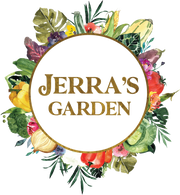How to Grow Herbs from Seed – A Step-by-Step Gardening Guide
Growing herbs from seed is one of the most rewarding experiences for any home gardener. Whether you want fresh basil for your pasta, cilantro for tacos, or mint for your tea, growing your own herbs is easy, economical, and incredibly satisfying. In this guide, I’ll walk you through everything you need to know—from when to sow herb seeds to how to transplant your herb seedlings into the garden.
Watch the video version of this guide:
Choosing the Right Time to Sow Herbs
Before sowing, it’s important to understand when to plant herb seeds. I like to divide herbs into three categories based on their growing preferences: warm-season, tropical, and cool-season herbs.
Warm-season herbs (like basil, parsley, thyme, oregano, rosemary, lavender, and mint) thrive in warm temperatures and full sun. If you live in a warm climate with mild winters, plant these herbs in fall, winter, or spring. In temperate climates, plant in spring, summer, or early fall.
Tropical herbs (like ginger, turmeric, Cuban oregano, papalo, lemongrass, and Thai basil) prefer hot temperatures and more moisture. Start sowing seeds for these herbs in spring after the last spring frost.
Cool-season herbs (like cilantro, chamomile, chives, dill, fennel, and sage) prefer cooler weather. Plant them in fall, winter, or early spring before temperatures rise. These herbs don’t tolerate heat well and tend to bolt quickly once the weather warms up.

How to Sow Herb Seeds Indoors
I recommend starting herb seeds indoors to give them a better chance to thrive, especially if your outdoor conditions aren’t ideal. Indoor seed sowing offers better control over the growing conditions and protects seedlings from pests and diseases.
Set Up Your Growing Space: Use a mini greenhouse in a bright indoor space or garage. Herbs require 8 hours of direct sunlight, so supplement with shop lights (5000K or higher) or grow lights like the Mars Hydro for the best results.
💡My favroite grow lights when growing things from seed - MARS HYDRO TS1000 150W LED Grow Light
Choose the Right Soil: Always use a sterile, soilless seed-starting mix to prevent diseases and ensure proper germination. You can buy ready-made seed starting mix or create your own by combining equal parts peat moss or coco coir with perlite or vermiculite. Add worm castings for a gentle nutrient boost.
🌱If you need a small amount of seed starting mix, use Espoma Organic Seed Starter Premium Potting Soil Mix
🌱If you need bulk seed starting mix, use ProMix seed starting soil

Select the Right Containers: For a few plants, 4-inch pots work great. If you’re starting many herbs, use a 72-cell seed tray. Herbs grow fast, so be ready to transplant them before they get root-bound.

Planting Steps:
-
Moisten the soil before filling containers.
-
Sow a few seeds per cell or pot.
-
Cover lightly with soil and mist with water.
-
Place under grow lights.
-
Germination occurs in 5–14 days.
-
Once true leaves appear, begin feeding with a gentle liquid fertilizer like Fox Farms Grow Big.

Troubleshooting Common Herb Seedling Problems
-
Leggy seedlings: This means your herbs aren’t getting enough light. Add a light source 5 inches above the seedlings.
-
Dampening off: A fungal issue that causes seedlings to rot at the base. Use sterile seed starting mix to prevent the growth of many types of pathogens. Avoid overhead watering which keeps the leaves wet. Avoid overwatering. Wet soils encourage growth of pathogens like mold and fungus.
-
Yellowing leaves: Typically due to overwatering. Let the soil dry slightly between waterings.
-
Seeds not sprouting: Provide heat (use a seedling heat mat) and better light to speed up germination.
How to Transplant Herb Seedlings
Once your seedlings are sturdy and their root systems are developed, it’s time to transplant them.

-
Spacing: In raised beds or if growing in the ground, space herbs 2–3 feet apart. In GreenStalk towers, use one plant per pocket.
-
Container planting: Use 1-gallon containers for small herbs like chives or cilantro, and 3–5 gallon containers for larger herbs like basil or oregano. I find that herbs especially grow well in grow bags because it has great drainage and keeps the soil more on the dry side.
-
Transplanting steps:
-
Dig a hole twice the size of the root ball.
-
Add granular organic fertilizer like Garden-Tone or blood meal.
-
Mix the fertilizer into the soil.
-
Place the seedling, fill in with soil, and water well.
-
Your herbs will begin to thrive with fresh growth in just a few weeks.

Why Growing Herbs from Seed is Worth It
Growing herbs from seed saves money and gives you access to a wider variety of plants than most stores or nurseries offer. You can enjoy fresh herbs year-round, and many herbs will continue to produce for months. Plus, the sense of accomplishment from growing your own herbs from scratch is unmatched.
Whether you're growing basil, rosemary, or dill, learning how to grow herbs from seed is an essential gardening skill. By following this step-by-step guide, you’ll have a lush, flavorful herb garden in no time.
If you found this guide helpful, be sure to share it with your fellow gardeners. Happy gardening!


